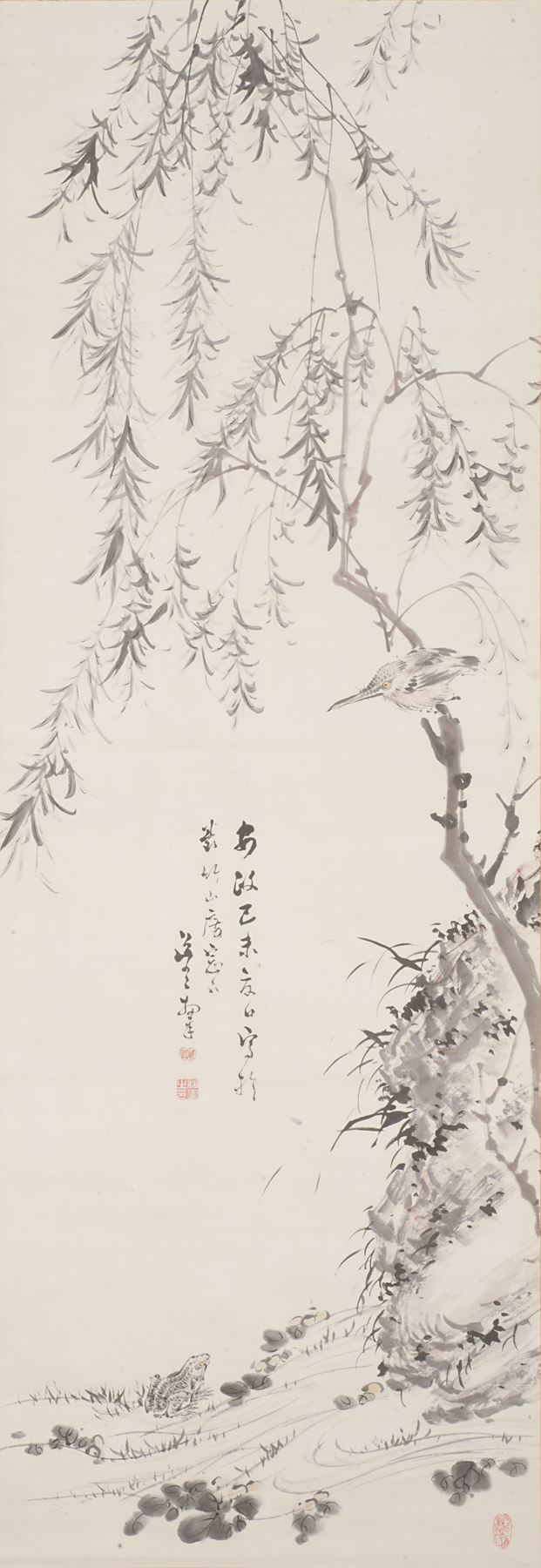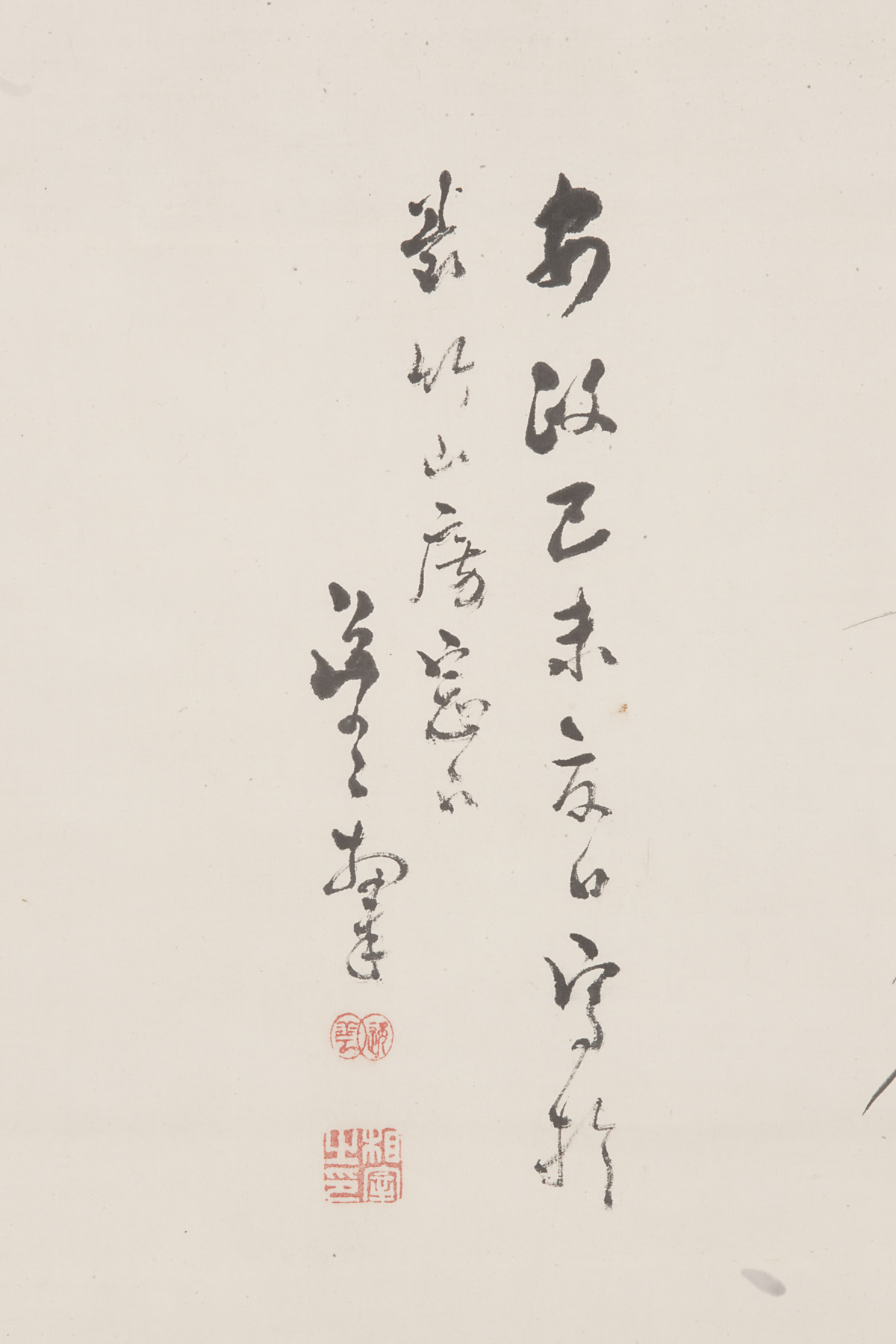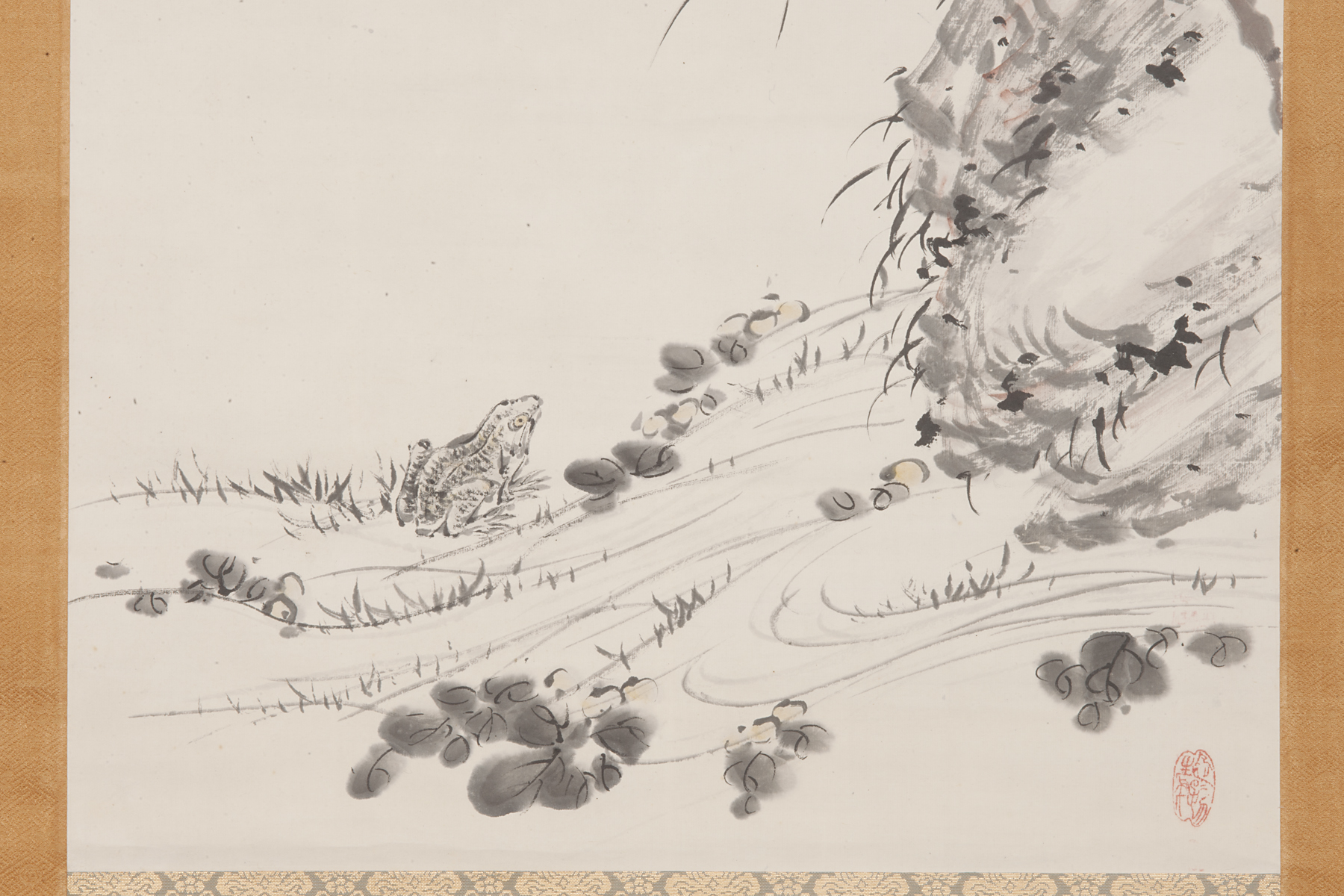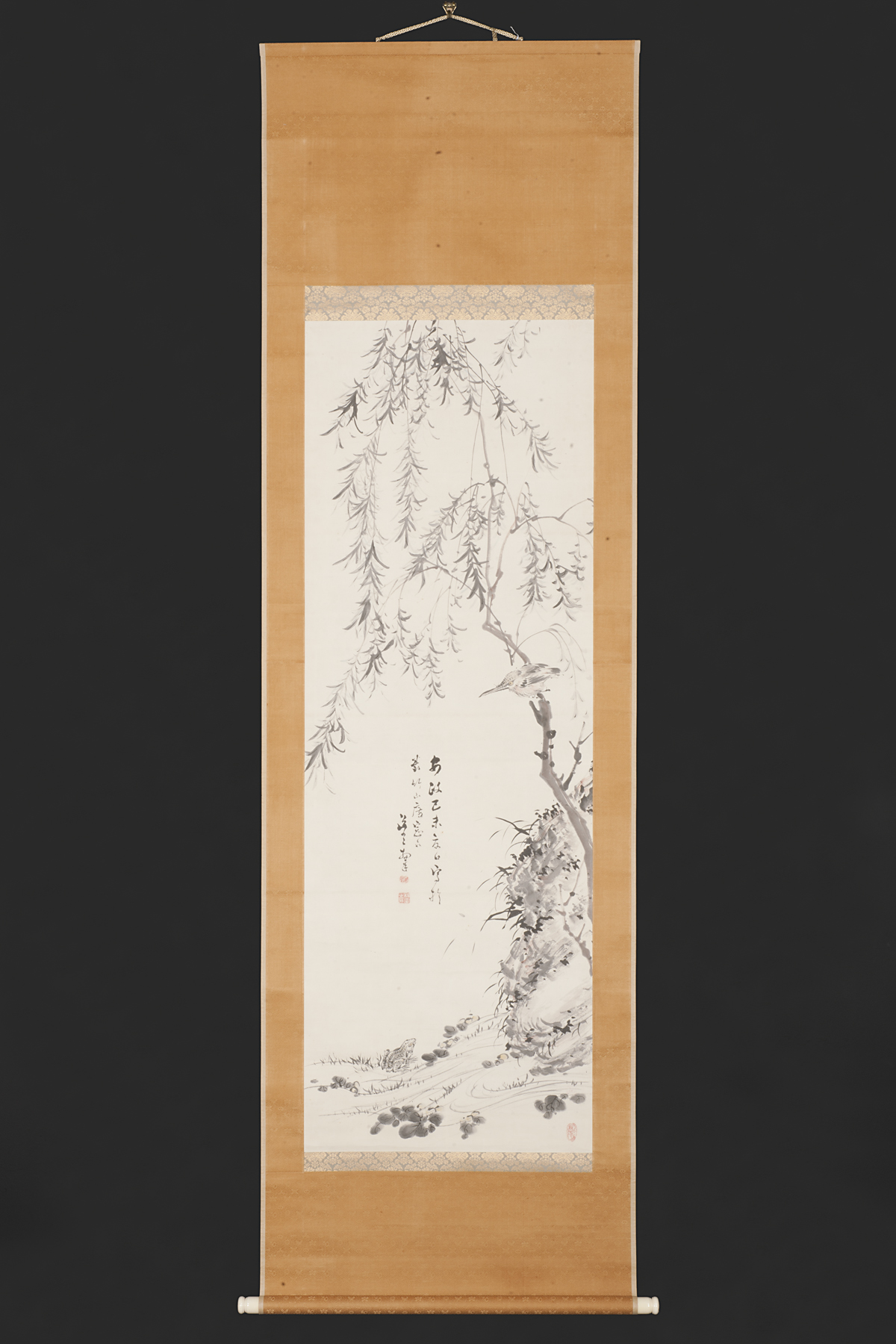Exhibition Label:
Asian Gallery, Summer 2003, Youmi Efurd (Didactic panel)
Flora & Fauna
Chinese bird-and-flower painting, fostered by imperial patronage, flourished during the Song dynasty (960-1297). The Song emperor Huizong (r. 1101-1126) himself was a painter of flower and bird subjects of considerable renown, and under his patronage the Court Academy fostered the tradition as never before, or indeed since. Huizong’s preference was for the most literal renderings of the details of nature.
The notion of the Court Academy, which had been established by Huizong in the Song, was restored in the Ming dynasty (1368-1644). The early Ming Academy of painters reinvigorated the genre of flower and bird painting—adopting the Song style of rendering images in meticulous detail—which continued into the Qing dynasty (1644-1911).
In Chinese tradition, the meaning of the flower and bird symbolism is multi-layered. It could be aesthetic, philosophical, religious, and even political, according to the context. The motifs of plants and birds could be used to express an endless range of meanings and sentiments.
Chinese bird-and-flower painting was transmitted to Japan by Chinese visitors during the Edo period (1615-1868). As so often happened in Japanese cultural history, native artists made new combinations of traditions that had been kept distinct in China. Academic and literati influences from China were often mixed together with the Japanese preference for dramatic asymmetrical compositions and evocative brushwork. This led to a new form of bird and flower painting that owed much to China and yet was fully expressive of the Japanese spirit.
Exhibition Label:
Asian Gallery, Summer 2003, Youmi Efurd
Itsuun was a Nagasaki artist who spent most of his life in that port city. During his life, foreign contact was common. As a result, foreign influence had an impact on his painting. Itsuun learned bird-and-flower painting in the style of Shen Quan from Ishizaki Yūshi (1768-1846). However, the majority of Itsuun’s work in this genre abandons his predecessors’ carefully detailed and highly colored manner.
Itsuun brushed each leaf of the slender willow in single strokes varying in tonality from deep metallic gray to an imperceptible tint of blue. The delicate execution of painted leaves contrasts the rapid application of dark wet ink that forms the pebbles on the ground below.
Archive Label date unknown:
Kionshita Itsuun, a Nanga painter, was born and lived in Nagasaki, Kyushu, but he also spent time in Kyoto and Edo (modern day Tokyo). He studied under Ishizaki Yūshi (1768-1846), who painted mainly landscapes and bird-and-flower paintings (kachōga), both in the Chinese manner and also as western-style oil paintings (yōga). Itsuun also studied the styles of the Ming painting master Tung Ch'i-ch'ang and the Chinese painter Chiang Chia-pu, who was in Japan at the time. Itsuun specialized in landscapes, but as seen in the present painting he was also very good at kachōga. This virtuoso production featuring pastel hues, wet and dry brushwork, and charming creatures is painted in the "boneless" style (a painting technique in which forms are painted without ink outlines) of Chiang Chia-p'u. Itsuun brushed each leaf of the slender willow in single strokes varying in tonality from a deep metalic grey to an imperceptible tint of blue. The delicacy of the leaves contrasts with the rapid application of dark, wet ink forming the pebbles on the ground below.





